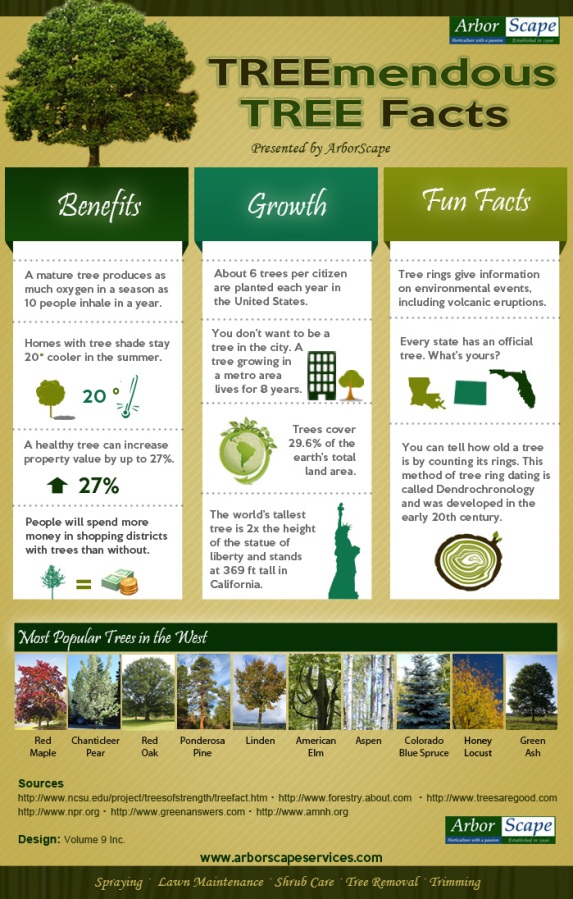Seasonal Tree Administration: Techniques For Looking After Trees Before And After Their Elimination
Seasonal Tree Administration: Techniques For Looking After Trees Before And After Their Elimination
Blog Article
Material Author-
When it involves seasonal tree care, ensuring proper administration prior to and after removal can considerably impact the health and aesthetics of your landscape. By comprehending the essential steps involved in analyzing tree health and getting ready for removal, you can proactively safeguard your residential property. But what about the critical methods to comply with once the tree is gone? Remain tuned to find the essential post-removal treatment procedures that will certainly help you grow a thriving and sustainable atmosphere for your trees.
Pre-Removal Tree Care
Before dealing with the elimination of a tree, it's vital to prioritize pre-removal tree care. Beginning by assessing the tree's health and wellness and architectural integrity. Look for indicators of disease, bug invasions, or any kind of architectural problems that might posture a security hazard during elimination. It's essential to speak with a qualified arborist to identify the best course of action.
Trimming dead or infected branches can protect against more damage to the tree and make sure a smoother elimination process.
In addition, take into consideration the ecological influence of eliminating the tree. Trees play a vital duty in our ecosystem, so growing a brand-new tree in an appropriate place can aid counter any loss. Ensure that you have the necessary licenses and consents for tree removal, specifically if the tree is secured by neighborhood policies.
Seasonal Maintenance Tips
Assessing your tree's needs throughout the year is critical for its wellness and durability. To maintain your trees in leading problem, comply with these seasonal upkeep ideas.
In consulting arborist , focus on trimming to eliminate dead or broken branches and urge new growth.
Summertime asks for routine watering, specifically during dry spells, to guarantee your tree stays hydrated.
As autumn approaches, watch out for early indicators of illness or stress and anxiety, and take into consideration applying mulch to secure the origins throughout wintertime.
In winter season, be cautious when getting rid of snow from branches to avoid breakage, and continue to check your tree's overall health.
Bear in mind to adjust your treatment routine based on the details needs of your tree species and local environment. By staying attentive and positive throughout the seasons, you can help your trees grow and flourish for years to come.
Post-Removal Tree Treatment
To make sure the health and wellness of your landscape also after tree removal, appropriate post-removal treatment is important. After a tree is removed, it's critical to load the continuing to be hole with topsoil and compact it to stop settling. This will help preserve the integrity of the ground and prevent potential threats in the future.
Consider planting brand-new vegetation instead of the gotten rid of tree to restore the equilibrium and looks of your landscape. Regularly water the area to promote the growth of brand-new plants and protect against dirt disintegration.
Check the surrounding trees for any type of indications of condition or anxiety that may have been triggered by the gotten rid of tree. Keep an eye out for insects that may've been drawn in to the previous tree and take safety nets to safeguard the remaining plant life.
If essential, seek advice from a professional arborist to assess the influence of the elimination on the surrounding trees and figure out any added treatment needed. By adhering to these post-removal care steps, you can make certain the ongoing wellness and appeal of your landscape.
Verdict
Finally, aggressive seasonal tree treatment is vital for keeping the wellness and equilibrium of your landscape. By evaluating tree health and wellness, pruning, and talking to an arborist prior to removal, you can make sure a safe procedure. After removal, filling the hole, planting new vegetation, and normal watering will certainly advertise brand-new growth and avoid erosion. Recommended Reading in mind to examine bordering trees for disease and look for additional treatment actions from an arborist to maintain your landscape prospering.
